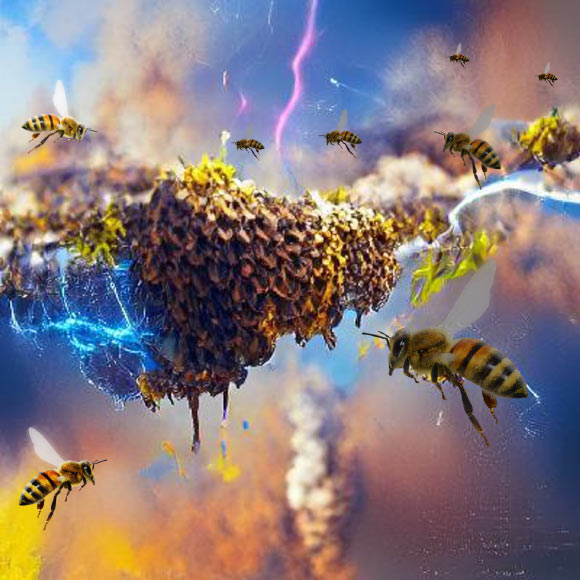The Earth’s atmosphere is always electrified to a greater or lesser extent, even in fair weather away from thunderstorms. By measuring the electrical fields near swarming honeybees, scientists at the University of Bristol have discovered that insects can produce as much atmospheric electric charge as thunderstorm clouds.
“We essentially always looked at how physics influenced biology, but at some point, we realized that biology might also be influencing physics,” said Dr. Ellard Hunting, a biologist at the University of Bristol.
“We’re interested in how different organisms use the static electric fields that are virtually everywhere in the environment.”
To test whether honeybee swarms can indeed cause observable changes in the atmospheric electricity, Dr. Hunting and colleagues carried out measurements at a field station at the University of Bristol’s School of Veterinary Sciences, Langford, United Kingdom.
The site contains several honeybee hives used for research, which, in the event of overcrowding, exhibit their typical swarming behavior.
Such an event provided an opportunity to assess the electrical effect of a honeybee swarm, by placing an electric field monitor and an upward viewing camera near the swarm to assess swarm density.
The researchers found that honeybee swarms change the atmospheric electricity by 100 to 1,000 volts/meter.
“How insect swarms influence atmospheric electricity depends on their density and size,” said Dr. Liam O’Reilly, a biologist at the University of Bristol.
“We also calculated the influence of locusts on atmospheric electricity, as locusts swarm on biblical scales, sizing 460 square miles with 80 million locusts in less than a square mile; their influence is likely much greater than honeybees.”
“We only recently discovered that biology and static electric fields are intimately linked and that there are many unsuspected links that can exist over different spatial scales, ranging from microbes in the soil and plant-pollinator interactions to insect swarms and perhaps the global electric circuit,” Dr. Ellard added.
“Interdisciplinarity is valuable here — electric charge can seem like it lives solely in physics, but it is important to know how aware the whole natural world is of electricity in the atmosphere,” said Professor Giles Harrison, an atmospheric physicist at the University of Reading.
The findings appear in the journal iScience.
_____
Ellard R. Hunting et al. Observed electric charge of insect swarms and their contribution to atmospheric electricity. iScience, published online October 24, 2022; doi: 10.1016/j.isci.2022.105241








